Dawn Little's Blog, page 2
January 28, 2019
Islandborn by Junot Díaz
Recommended Grades: 3-5
When Lola is asked to draw a picture of where her family emigrated from, she becomes worried because she can’t remember the Island. But with the help of her family and friends, and their memories, Lola is able to go on an imaginary journey back to the Island.
Lesson Idea:
[image error]

 Mentor Text; Six Traits of Writing – Idea Development: Islandborn is a fantastic mentor text to help students develop idea seeds in their writer’s notebook. After reading it aloud to students, have them brainstorm memories that are important to them about family and friends.
Mentor Text; Six Traits of Writing – Idea Development: Islandborn is a fantastic mentor text to help students develop idea seeds in their writer’s notebook. After reading it aloud to students, have them brainstorm memories that are important to them about family and friends.
This is also a mentor text in The Storyteller’s Project. Click on the link to find out more!
©2019 by Dawn Little for Picture This! Teaching with Picture Books. All Amazon links are affiliate links and may result in my receiving a small commission. This is at no additional cost to you.
December 27, 2018
Snow Sisters! Two Sisters, One Snowy Day by Kerri Kokias
Recommended Grades: 2-5
Just like snowflakes, no two sisters are alike. The heroines enjoy a snow day in their own unique ways independently, but then reunite for a surprise!
Lesson Idea:
[image error]
 Mentor Text; Six Traits of Writing – Word Choice: The use of clear, succinct language, coupled with beautiful illustrations makes Snow Sisters! an excellent model for teaching word choice. Read through the story and ask students what they notice about the use of language and the organization of the text. How do the pictures enhance the minimal text?
Mentor Text; Six Traits of Writing – Word Choice: The use of clear, succinct language, coupled with beautiful illustrations makes Snow Sisters! an excellent model for teaching word choice. Read through the story and ask students what they notice about the use of language and the organization of the text. How do the pictures enhance the minimal text?
©2018 by Dawn Little for Picture This! Teaching with Picture Books. All Amazon links are affiliate links and may result in my receiving a small commission. This is at no additional cost to you.
January 30, 2018
The Word Collector by Peter H. Reynolds
Recommended Grades: K-5
Some people collect coins, some collect stamps, but Jerome collects words. Words that transform, connect, and empower. This is a celebration of finding your own words and the impact you can have when you share them with the world.
Lesson Idea:
[image error] Mentor Text; Six Traits of Writing – Word Choice: Peter H. Reynolds books are always whimsical and inviting to young readers. The Word Collector is no different. Read aloud this book to provide students with an opportunity to realize that they too, can collect words in their writer’s notebooks. And use the story to empower them to share those collected words with the world through their writing.
Mentor Text; Six Traits of Writing – Word Choice: Peter H. Reynolds books are always whimsical and inviting to young readers. The Word Collector is no different. Read aloud this book to provide students with an opportunity to realize that they too, can collect words in their writer’s notebooks. And use the story to empower them to share those collected words with the world through their writing.
©2018 by Dawn Little for Picture This! Teaching with Picture Books. All Amazon links are affiliate links and may result in my receiving a small commission. This is at no additional cost to you.
September 20, 2016
Six STEM Mentor Texts
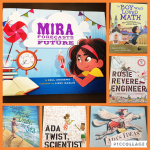 I have recently read several picture books that I think are great mentor texts for STEM in the classroom.
I have recently read several picture books that I think are great mentor texts for STEM in the classroom.
Solving the Puzzle Under the Sea: Marie Tharp Maps the Ocean Floor by Robert Burleigh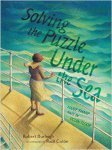
The story of one of the twentieth century’s most important scientists, but little known, highlighting her perseverance and determination to map the ocean floor.
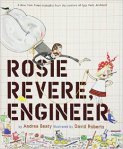 Rosie Revere, Engineer by Andrea Beaty
Rosie Revere, Engineer by Andrea Beaty
Rosie Revere sees inspiration in the trash around her and constructs great inventions from odds and ends. Afraid of failure, she hides them under her bed. Until her great-great-aunt Rose shows her that flops aren’t something to fear, but something to celebrate.
Ada’s Ideas: The Story of Ada Lovelace, the World’s First Computer Programmer by Fiona 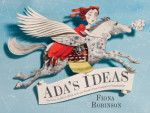 Robinson
Robinson
The story of the creative mind and mathematical genius of Ada Lovelace, a little-known but important person in the history of the computer.
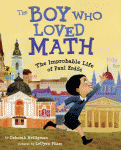 The Boy Who Loved Math: The Improbable Life of Paul Erdos by Deborah Heiligman
The Boy Who Loved Math: The Improbable Life of Paul Erdos by Deborah Heiligman
Paul thought about math all day long. This is the story of how he found his own way in the world, making friends, sharing ideas, and grew to become one of the world’s most famous and beloved mathematicians.
Mira Forecasts the Future by Kell Andrews 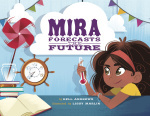
One day, Mira notices the wind fluttering through the streamers of a windsock at the beach. Using science, she finds a talent to make weather predictions.
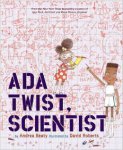 Ada Twist, Scientist by Andrea Beaty
Ada Twist, Scientist by Andrea Beaty
Ada Twist’s head is full of questions. Then her parents put her in the Thinking Chair. Will time in the chair change her mind? In the same spirit as Rosie Revere, Ada is full of curiosity and perseverance.
©2016 by Dawn Little for My Learning Life. All Amazon links are affiliate links and may result in my receiving a small commission. This is at no additional cost to you.
Filed under: mentor texts, STEM Tagged: STEM Mentor Texts

February 1, 2016
Feathers: Not Just for Flying by Melissa Stewart
Feathers: Not Just for Flying is a Maryland Black Eyed Susan Award nominee for 2016.
is a Maryland Black Eyed Susan Award nominee for 2016.
Recommended Grades: 3-5
Feathers aren’t just for flying. . . In this scrapbook-like nonfiction picture book, Stewart introduces sixteen types of birds and compares their feathers to everyday objects teaching readers just how practical their feathers can be.
Lesson Idea:
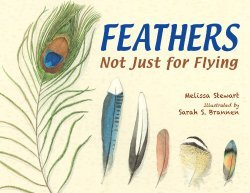 Mentor Text: Writer’s Craft: Before sharing Feathers: Not Just for Flying
Mentor Text: Writer’s Craft: Before sharing Feathers: Not Just for Flying as a mentor text, read aloud the author’s note. In it, Stewart shares how she researches for her books and develops the concepts that make her books more engaging. Encourage students to use Feathers: Not Just for Flying
as a mentor text, read aloud the author’s note. In it, Stewart shares how she researches for her books and develops the concepts that make her books more engaging. Encourage students to use Feathers: Not Just for Flying as a model text when they are researching and writing their own informational texts. Consider both the scrap-book and the comparison models as possible mentors for students.
as a model text when they are researching and writing their own informational texts. Consider both the scrap-book and the comparison models as possible mentors for students.
©2016 by Dawn Little for Picture This! Teaching with Picture Books. All Amazon links are affiliate links and may result in my receiving a small commission. This is at no additional cost to you.
Filed under: Feathers: Not Just for Flying, mentor texts, nonfiction, nonfiction writing, organization, teaching with picture books, writers workshop Tagged: Feathers: Not Just for Flying, mentor texts, nonfiction mentor texts, teaching with picture books, writers workshop

Feathers: Not Just for Flying by Melissa Sweet
Feathers: Not Just for Flying is a Maryland Black Eyed Susan Award nominee for 2016.
is a Maryland Black Eyed Susan Award nominee for 2016.
Recommended Grades: 3-5
Feathers aren’t just for flying. . . In this scrapbook-like nonfiction picture book, Stewart introduces sixteen types of birds and compares their feathers to everyday objects teaching readers just how practical their feathers can be.
Lesson Idea:
 Mentor Text: Writer’s Craft: Before sharing Feathers: Not Just for Flying
Mentor Text: Writer’s Craft: Before sharing Feathers: Not Just for Flying as a mentor text, read aloud the author’s note. In it, Stewart shares how she researches for her books and develops the concepts that make her books more engaging. Encourage students to use Feathers: Not Just for Flying
as a mentor text, read aloud the author’s note. In it, Stewart shares how she researches for her books and develops the concepts that make her books more engaging. Encourage students to use Feathers: Not Just for Flying as a model text when they are researching and writing their own informational texts. Consider both the scrap-book and the comparison models as possible mentors for students.
as a model text when they are researching and writing their own informational texts. Consider both the scrap-book and the comparison models as possible mentors for students.
©2016 by Dawn Little for Picture This! Teaching with Picture Books. All Amazon links are affiliate links and may result in my receiving a small commission. This is at no additional cost to you.
Filed under: Feathers: Not Just for Flying, mentor texts, nonfiction, nonfiction writing, organization, teaching with picture books, writers workshop Tagged: Feathers: Not Just for Flying, mentor texts, nonfiction mentor texts, teaching with picture books, writers workshop

January 25, 2016
Frankencrayon by Michael Hall
Publisher: Greenwillow Books, an imprint of Harper Collins
Publication Date: January 26, 2016
Recommended Grades: 3-5
From the author of Red: A Crayon’s Story, comes Frankencrayon, his newest book. In this story, a set of crayons are supposed to “write the story,” but someone or something draws a scribble in the middle of the page. As a result, the picture book has to be canceled.
Lesson Idea:
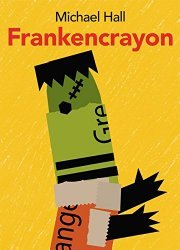 Mentor Text: Writer’s Craft, Developing Ideas: Read aloud Frankencrayon
Mentor Text: Writer’s Craft, Developing Ideas: Read aloud Frankencrayon with a group of upper elementary writers. Discuss how the author uses “a story within a story” structure. Encourage students to try this technique in their own writing.
with a group of upper elementary writers. Discuss how the author uses “a story within a story” structure. Encourage students to try this technique in their own writing.
Additionally, you could pair Frankencrayon with Red: A Crayon’s Story
with Red: A Crayon’s Story , The Day the Crayons Quit and The Day the Crayons Came Home
, The Day the Crayons Quit and The Day the Crayons Came Home , both by Drew Daywalt, as a set of texts in which the main characters are crayons. Encourage students to use an inanimate object as a main character in their own writing.
, both by Drew Daywalt, as a set of texts in which the main characters are crayons. Encourage students to use an inanimate object as a main character in their own writing.
©2016 by Dawn Little for Picture This! Teaching with Picture Books. All Amazon links are affiliate links and may result in my receiving a small commission. This is at no additional cost to you.
Filed under: Frankencrayon, ideas, mentor texts, teaching with picture books, writers workshop Tagged: Frankencrayon, idea development, mentor texts, teaching with picture books, writers workshop

November 2, 2015
W is for Webster: Noah Webster and His American Dictionary by Tracey Fern
Publisher: Farrar Straus Giroux
Publication Date: November 10, 2015
Recommended Grades: 3-5
From an early age, Noah Webster liked to use big words. He loved learning and even became a school teacher. It was during his time in the classroom that he realized that the newly formed America needed its own language, because American children came from many different countries and didn’t speak like British children.
Lesson Idea:
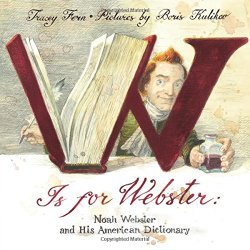 Mentor Text: Biography: Pair W Is For Webster: Noah Webster and his American Dictionary
Mentor Text: Biography: Pair W Is For Webster: Noah Webster and his American Dictionary with Noah Webster and His Words to build background knowledge of a man who was known as “America’s own Dr. Webster.” W Is For Webster: Noah Webster and his American Dictionary
with Noah Webster and His Words to build background knowledge of a man who was known as “America’s own Dr. Webster.” W Is For Webster: Noah Webster and his American Dictionary goes into specific detail for the reasons behind the creation of the American Dictionary as well as what people thought of Noah at that time in American history.
goes into specific detail for the reasons behind the creation of the American Dictionary as well as what people thought of Noah at that time in American history.
Disclosure: I received a copy of this book from the publisher for review.
©2015 by Dawn Little for Picture This! Teaching with Picture Books. All Amazon links are affiliate links and may result in my receiving a small commission. This is at no additional cost to you.
Filed under: biographies, W is for Webster Tagged: picture book biographies, teaching with picture books, W is for Webster

September 14, 2015
My Name is Truth: The Life of Sojourner Truth by Ann Turner
Publisher: Harper Collins
Publication Date: January 20, 2015
Recommended Grades: 3-5
Born in 1797 to slave parents, Isabella Baumfree was sold several times before being bought by the Dumont family, where she stayed for sixteen years. After escaping from slavery and living and working in New York City, Isabella chose her own name, Sojourner Truth – for she would always travel and she would always tell the truth.
Lesson Idea:
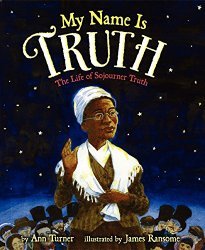 Mentor Text: Biography:Personal Narrative: Read aloud My Name Is Truth: The Life of Sojourner Truth
Mentor Text: Biography:Personal Narrative: Read aloud My Name Is Truth: The Life of Sojourner Truth as a mentor text for a writing unit on personal narratives. Note how the author wrote a biography of Sojourner Truth, but wrote it from Truth’s point of view. Discuss how the author had to conduct research in order to understand Truth’s voice and be able to portray it in this text, including using Truth’s own quotes.
as a mentor text for a writing unit on personal narratives. Note how the author wrote a biography of Sojourner Truth, but wrote it from Truth’s point of view. Discuss how the author had to conduct research in order to understand Truth’s voice and be able to portray it in this text, including using Truth’s own quotes.
Disclosure: I received a copy of this book from the publisher to review.
©2015 by Dawn Little for Picture This! Teaching with Picture Books. All Amazon links are affiliate links and may result in my receiving a small commission. This is at no additional cost to you.
Filed under: biographies, mentor texts,
September 7, 2015
Winnie: The True Story of the Bear Who Inspired Winnie-the-Pooh by Sally M.
Recommended Grades: 3-5
When Harry Colebourn saw a baby bear for sale at a Canadian train station, he knew he could care for it. Harry was a veterinarian. But he was also a soldier in training for World War I. Harry named the bear Winnie, short for Winnipeg, his company’s hometown, and he took her along to training camp in England. Winnie became the regiment’s much-loved mascot, but who could care for the bear when Harry had to go to battle in France? Harry found just the right place for Winnie: the London Zoo. There a boy named Christopher Robin came along and played with Winnie.
Lesson Idea:
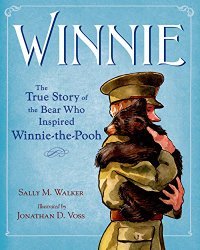 Mentor Text: Biography: Building Background Knowledge: Read aloud Winnie: The True Story of the Bear Who Inspired Winnie-the-Pooh
Mentor Text: Biography: Building Background Knowledge: Read aloud Winnie: The True Story of the Bear Who Inspired Winnie-the-Pooh and pair it with Fur, Fins, and Feathers by Cassandre Maxwell for students to get a background look at the London Zoo as a care-taking spot for Winnie. Additionally, you could read aloud Winnie: The True Story of the Bear Who Inspired Winnie-the-Pooh
and pair it with Fur, Fins, and Feathers by Cassandre Maxwell for students to get a background look at the London Zoo as a care-taking spot for Winnie. Additionally, you could read aloud Winnie: The True Story of the Bear Who Inspired Winnie-the-Pooh to give students a look at the background of Winnie while pairing it with Winnie the Pooh stories. Share the end papers with students which provides primary sources of Harry, Winnie, and Christopher Robin.
to give students a look at the background of Winnie while pairing it with Winnie the Pooh stories. Share the end papers with students which provides primary sources of Harry, Winnie, and Christopher Robin.
©2015 by Dawn Little for Picture This! Teaching with Picture Books. All Amazon links are affiliate links and may result in my receiving a small commission. This is at no additional cost to you.
Filed under: biographies, building background knowledge, Winnie by Sally M. Walker Tagged: building background knowledge, picture book biographies, Winnie by Sally M. Walker




